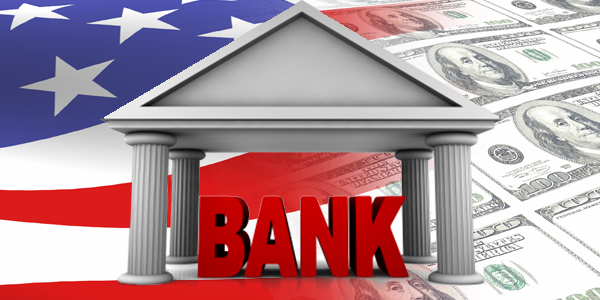America’s Largest Banks Still Dominate Deposits ... But Others are Making Progress

|
|
Stashing your cash in one place may not always be the best idea. It’s like picking your investments: You want to diversify your portfolio in case some of them underperform. But from the looks of the most recent bank call reports and historical trends, we as a nation have done just that. We put half of our cash in just a handful of institutions.
As of 2016, ten major U.S. banks held $5.53 trillion in domestic deposits. That represented 50.3% of all the deposits in the banking industry. It’s a number so large, it’s equivalent to the nation’s entire debt load back in 1998.
Here’s another way of looking at things: The top ten banks represent only 0.18% of the 5,464 banks we track … yet they hold half of our cash. The graph below shows you how these two groups of banks (the ten largest deposit holders and the remaining 99.82% of institutions in the industry) compare over the last six years. Both have increased their holdings over time.

Still, as dominant as the top ten banks are in deposit-taking, other institutions are making progress. Just take a look at the next graph. It shows how much of the industry’s domestic deposits these ten banks represented from 2010 to 2016.
While the trend stayed fairly consistent from 2010 to 2014, the largest banks began to lose market share in 2015 and 2016. At 50.3%, their share of the nation’s deposits is at one of the lowest levels in six years. That suggests that other, smaller banks are taking in additional deposits.

So, who are the industry’s cash giants? Well, I’m sure many of their names will not surprise you:

The top three banks came in with nearly identical numbers for 2016: Bank of America, N.A. led the pack with $1.26 trillion in domestic deposits, JPMorgan Chase Bank, N.A. was right behind with $1.24 trillion, and Wells Fargo Bank, N.A. came in third with $1.22 trillion. These three banks alone held 33.8 percent of total U.S. deposits, overshadowing the remaining seven on the top ten list. And the rest of the banks in the industry can’t even come close to these guys.
Now, as far as the safety ratings go, it’s a 50/50 split. Half of the top ten banks are in the “B” range, which is considered “Good” by Weiss, while the rest are “C” – “Fair” rated. Four of the five “C” ratings are at the top third of the letter grade (they have a + sign).
(NOTE: The table above also has investment ratings for each bank’s parent company. They are all in the “BUY” range).
Bottom line: Safety ratings show that the largest U.S. banks are either in good or fair shape. That is somewhat encouraging, considering they still hold a large share of our hard-earned cash.
But even though things are going well now, we must monitor the performance of large banks and watch them closely for any red flags. After all, they hold half of our cash and I’m sure that many of you have deposits and loans with at least one of them. Be sure to add them to your Watchlist where you can monitor them and we can let you know about any rating changes.
Think safety,
Remi Lukosiunas
Money and Banking Edition, By Remi Lukosiunas, Financial Analyst Remi Lukosiunas, a Financial Analyst, joined Weiss Ratings in 2014 with a financial services background in internal audit and the credit union industry. Remi conducts banking, credit union, insurance and investment research. He has also written extensively on stocks and investing using ratings as a guide. Remi is a graduate of Florida State University with a degree in multinational business. |


